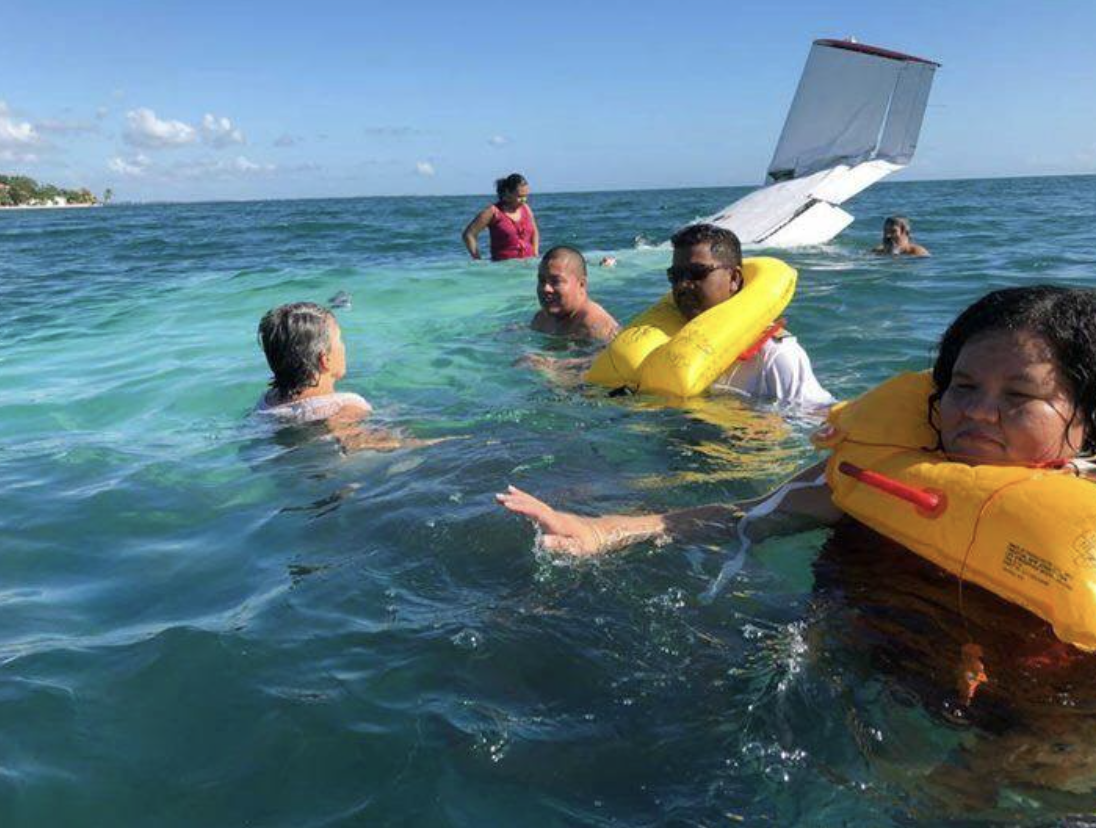
The turboprop-powered Cessna 208 Caravan has been a highly successful airplane since its introduction in 1985. Its sturdy construction and large payload have made it the choice of many operators in remote areas all around the world. Unfortunately, the Caravan’s operators have also found a great variety of ways to wreck the airplane--from striking mountaintops to runway overruns to stalls in icing. On Nov. 17, 2017, a Caravan operator in Belize found a new way to have an accident--hitting an automobile just after liftoff.
It was also the sixth time the operator, Tropic Air, had a Caravan wind up in the waters of the Caribbean since 2002.
The day the accident happened, the Tropic Air C-208B Grand Caravan (V3-HGX) was departing the Placencia airstrip in Placencia Village, Belize. Placencia is a small beach resort town on a narrow peninsula descending from the mainland. The airstrip is an asphalt-paved surface--2,135 ft. in length and 25 ft. wide--that bisects the peninsula, leaving only a narrow area at the airstrip’s east end for the main north-south roadway to pass.
The departing flight was the continuation of a morning trip from Belize City to Punta Gorda, with scheduled stops at Dangriga and Placencia. At 8:40 a.m., the pilot taxied the airplane from parking to the west end of the strip for a takeoff from Runway 07. On board with him were 10 passengers, one of whom was a trainee/observer in the cockpit right seat. Also among the passengers were the acting prime minister and the agriculture minister of the country.
After turning around at the west end of the strip, the pilot commenced his takeoff roll. He stated in an interview that when he was halfway down the runway, he saw a vehicle turning around the curve in the road that leads to crossing directly in front of his takeoff path. He thought it was too late for him to stop the aircraft but he hoped the vehicle would stop. He rotated the nose just before the end of the runway, heard the stall-warning horn sound and felt an impact like going over a speed bump. The right main landing gear struck the upper-right-hand passenger doorframe of a Subaru SUV, causing the airplane to deviate from its normal climb profile.
About 5 sec. after the impact, the engine stopped producing power. The airplane rapidly descended, striking the water about 200-300 ft. from shore. The pilot struck his head on part of the cockpit structure and lost consciousness for a short time. Neither he nor the right-seat observer unlatched their cabin doors, and as a result they were unable to open those doors once they were in the water.
According to a person in the cabin, the airplane began to sink immediately after impact and the cockpit filled with water within a few minutes. The depth of water in the area where the airplane stopped was 15-20 ft. The aircraft’s nose sank into the mud, but the tail section remained above the water.
A Tropic Air employee seated in the back of the airplane opened an aft door and assisted passengers out of the airplane. Passengers attempted to don life vests but were delayed in doing so because of the packaging and difficulty locating them. There were attempts by passersby and someone in a very small vessel to assist in the evacuation, but ultimately the passengers and crew were rescued by two tourist boats. The pilot stated he could not swim and was unable to assist in the evacuation. The pilot and all 10 passengers sustained minor injuries, as did the two occupants of the Subaru.
Following the accident, the pilot refused to take a drug and alcohol test, and he declined to take a medical examination scheduled for the following day.
Tropic Air’s Accident History
Tropic Air might hold the world record for the most ditchings by the airplanes of one company. Its Grand Caravans went into the water due to microbursts in 2002 and 2005, the first while landing and the second while taking off. Grand Caravans ditched following engine failures in 2004 and 2008, although the water depth was only 2 ft. in the 2008 event. A Grand Caravan overran the runway in 2014 and again ended up in the sea. In addition, a Tropic Air Cessna 207A Stationair ditched in shallow water in 2006 after 15 min. of flight due to engine failure on a recently overhauled engine.
Although the older accident records are sketchy, it appears that of the 56 persons who were aboard the seven flights, only 16 suffered minor injuries, plus the two people in the automobile, and there were no fatalities. At least four of the airplanes were hull losses.
Belize is a seaside nation, of course, and many of the airports are adjacent to the Caribbean Sea. Runways are oriented east and west to benefit from the sea breeze. Up to a point, the water crash-landings are understandable. The survival rate is phenomenal. However, all those crashes are hard to ignore.
The subsequent article will examine the investigation.





